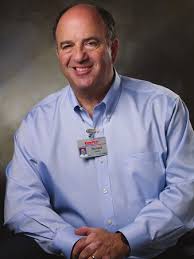 Having helped Costco Wholesale raise Series A funding in 1985, former investment banker Richard Galanti was asked to become the CFO of the discount big box retailer, which numbered just six warehouse stores at the time. Today, Costco is a multi-billion-dollar business with more than 800 stores worldwide.
Having helped Costco Wholesale raise Series A funding in 1985, former investment banker Richard Galanti was asked to become the CFO of the discount big box retailer, which numbered just six warehouse stores at the time. Today, Costco is a multi-billion-dollar business with more than 800 stores worldwide.
Few CFOs have amassed the knowledge and experience that Galanti has accumulated during his 35-year-plus tenure leading finance at the public company. The son of a grocery store manager, he has pretty much seen it all—a handful of stock market crashes, technology disruptions, a formidable competitor in Amazon and now a pandemic rife with business uncertainties, among other crises.
Senior writer Russ Banham, who has interviewed Galanti more than a dozen times over the past two decades, sat down with the veteran CFO in late-November to discuss the business impact of the pandemic on Costco. The following is a condensed version of their conversation.
It’s certainly something we’ve never experienced before but wasn’t completely off the radar screen. Pandemics happen. We know that. I guess the biggest surprise was the remote work. Eighty percent-plus of our employees are still working from home. We’re hoping to bring them back soon into the office, but surging Covid rates continue to complicate our plans.
If we’d have enough capital on hand to pay suppliers. We had seasonal things like lawn and garden equipment and summer apparel set to come into the stores and wanted to honor our financial commitments. … No one really knew how this would play out back in February and March. Would the economy worsen? Would demand fall off a cliff? To be safe, we raised $4 billion of capital (in April), using $1.5 billion of it to pay off two tranches of debt that were coming up, giving us $2.5 billion in new debt.
Experts were saying it would last maybe 6 to 8 weeks, but what if it continued into the summer and beyond? People were losing jobs and we weren’t sure if and when there’d be a federal stimulus bill. We were concerned about sales of seasonal equipment like patio furniture and live house plants and shrubs. If we sold less than 50 percent and had to hold the rest in inventory, which we’ve never done before, it might impinge our cash flow to honor our supplier commitments.
Well, that and the fact we could get it at a fixed 1.6 percent interest rate on a weighted average of 7 to 12 years.
No, but we didn’t know that at the time. We were still scurrying to procure items that people were hoarding. I remember seeing the signage outside the stores with a list of 20 items we’d run out of, like sanitizing wipes and toilet paper. We’d get a shipment and two hours later they were gone.
They continued to operate but we had other issues. People were hoarding protein, forcing the stores to limit our members to (buying) three items at a time. But then things gradually got back to normal, or a version of normal.
Parts of the business actually grew, quite a bit in fact. For example, when local governments forced restaurants to shut down, grocery items took off. Home-related products also shot up, since people weren’t eating out, going on vacations or spending money on airfare, cruises and hotels. Stuck at home, they focused on their houses and gardens. Sales of items like juicers, MixMasters, small electric appliances, exercise equipment, patio furniture and house plants increased. Overall, our same-store sales increased from a pre-Covid range of 6 to 8 percent to the low to mid-teens in September, a near doubling.
For the most part, but the biggest sellers were food and health and beauty aids, for some reason.
That’s possible. But bear in mind we were considered an essential business, since we sell food and pharmaceutical products. That got people into the stores, where other products they needed were available.
In a big way. They shot up 50 percent, year-over-year, in our fiscal year (ending August 30), with some weeks up more than 100 percent. Groceries were a bit part of the increase. In 2017, we launched same-day delivery of fresh food through Instacart, what we call `one-day fresh.’ Added up, what was an $8 billion business for us last year went up 50 percent-ish (during the fiscal year), and more than that on an annualized basis.
The big one is omnichannel. We had heard for years that everyone buys online and doesn’t go into stores anymore, but we were reluctant to get into it at first with a big investment. Our position changed gradually and then substantially during Covid. We’ve invested and continue to invest in building the ecommerce platform and improving the functionality of our fulfillment and distribution. We’re looking to accommodate what we expect will be a doubling in our ecommerce and third-party deliveries in the near future.
The big one was our decision in March to acquire (for $1 billion) Innovel Solutions, a logistics company that provides so-called `last-mile delivery’ of big and bulky products like major appliances, furniture, large TVs, fitness equipment and such. They operate 11 fulfillment and distribution centers, comprising more than 15 million square feet of warehouse space altogether. They can meet a one-to-two day delivery timeframe in 85 percent of continental time zones. It’s our biggest acquisition in more than a quarter-century.
I’ve learned there are two things that can seriously change your future earnings and cash flows. The first is not having liquidity and the second is not preparing for worst-case scenarios. We were fortunate to have a very strong balance sheet and relatively predictable cash flow to get money when we needed it. At the outset of the pandemic, when we had no sense of what might happen six or eight months ahead, we knew we could access capital to weather the worst.
Our founders said from day one you have to be ready to confront adversity head on. If you don’t take the time to imagine the worst, you won’t be prepared when the disaster strikes. Bad things happen. The challenge is they come in different shapes and sizes. Others can stick their heads in the sand and not worry about the future. Not the CFO.

Chief Executive Group exists to improve the performance of U.S. CEOs, senior executives and public-company directors, helping you grow your companies, build your communities and strengthen society. Learn more at chiefexecutivegroup.com.
0

1:00 - 5:00 pm
Over 70% of Executives Surveyed Agree: Many Strategic Planning Efforts Lack Systematic Approach Tips for Enhancing Your Strategic Planning Process
Executives expressed frustration with their current strategic planning process. Issues include:
Steve Rutan and Denise Harrison have put together an afternoon workshop that will provide the tools you need to address these concerns. They have worked with hundreds of executives to develop a systematic approach that will enable your team to make better decisions during strategic planning. Steve and Denise will walk you through exercises for prioritizing your lists and steps that will reset and reinvigorate your process. This will be a hands-on workshop that will enable you to think about your business as you use the tools that are being presented. If you are ready for a Strategic Planning tune-up, select this workshop in your registration form. The additional fee of $695 will be added to your total.

2:00 - 5:00 pm
Female leaders face the same issues all leaders do, but they often face additional challenges too. In this peer session, we will facilitate a discussion of best practices and how to overcome common barriers to help women leaders be more effective within and outside their organizations.
Limited space available.

10:30 - 5:00 pm
General’s Retreat at Hermitage Golf Course
Sponsored by UBS
General’s Retreat, built in 1986 with architect Gary Roger Baird, has been voted the “Best Golf Course in Nashville” and is a “must play” when visiting the Nashville, Tennessee area. With the beautiful setting along the Cumberland River, golfers of all capabilities will thoroughly enjoy the golf, scenery and hospitality.
The golf outing fee includes transportation to and from the hotel, greens/cart fees, use of practice facilities, and boxed lunch. The bus will leave the hotel at 10:30 am for a noon shotgun start and return to the hotel after the cocktail reception following the completion of the round.